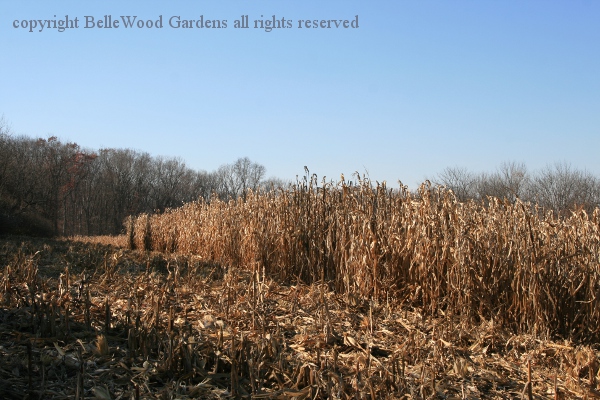
.
If you have any comments, observations, or questions about what you read here, remember you can always Contact Me
All content included on this site such as text, graphics and images is protected by U.S and international copyright law.
The compilation of all content on this site is the exclusive property of the site copyright holder.
Drive around Hunterdon County in the summertime and you'll see numerous fields of corn. If there's a farm stand at the end of a nearby driveway, complete with honesty box and a sign - how much for how many ears of corn - it's likely sweet corn for people to enjoy. Delicious sweet corn, just two ears to a stalk, is picked on a daily basis once the crop is ready. Otherwise, left standing until it's sere and brown, it's field corn, for cattle feed. (Or maybe ethanol, biofuel. But I'm not sure about that.) Field corn often stays until much later in the year so it will thoroughly mature and dry on the stalk. There's also popcorn, but that's different.

Way back when in once-upon-a-time-land, people would harvest grain with a scythe. As stalks were cut a second crew would gather an armful into a round bundle and stand the stook or sheaf on end. When done, the sheaves would be gathered and brought in. Not terribly efficient. Some would be dropped, the corners of the field or near a fence or stone wall would be difficult to harvest. Historically, after a harvest any leftover grain or other produce that was missed, left behind for one reason or another, was left for the gleaners - poor people, widows, paternal orphans - who needed the food that gleaning would provide.
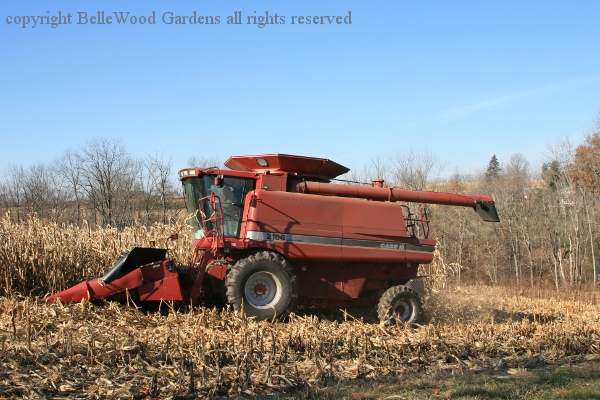
Today, not many people are bringing in the sheaves. Huge machines cut down the corn. Inside the body of the harvester the corn is broken off the stalks, husked, taken off the cob, and filtered into a holding tank.
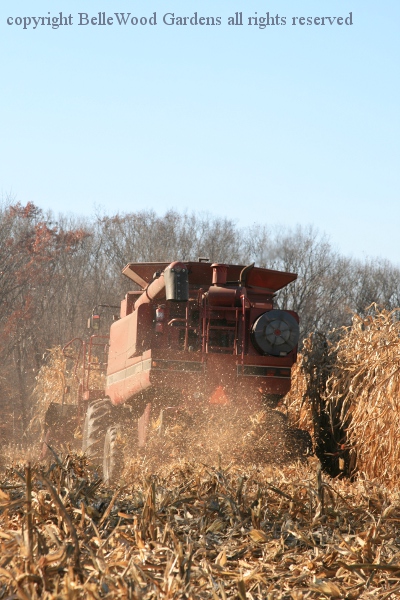
As the machine trundles around and around the field it spits debris out the back.
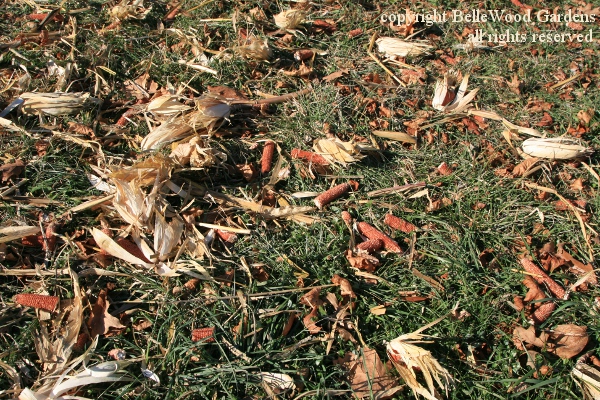
Empty cobs and husks fall to the ground.
But there are still gleaners. They're no longer human though.
Canada geese feed on a variety of wild and cultivated plants, but like to feed on corn. They prefer harvested corn fields where they can see danger approaching, as well as land and take off effectively.
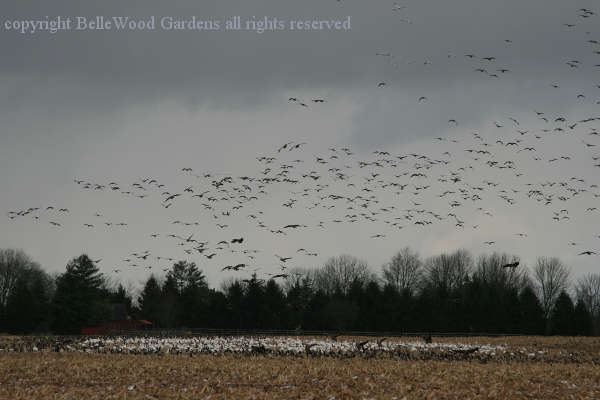
This is a different field than the one shown being harvested. Same difference, field corn that was chopped down and picked over by machine. And this enormous flock of Canada geese and snow geese have gathered in, with more arriving as Joan and I watched.
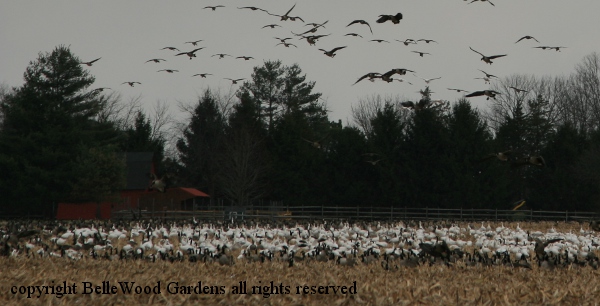
So many geese, gleaning. Geese come to feed morning and afternoon, spend the night at a pond or other open body of water. I also see them grazing in pastures. I came past this field a few days later, and there were no geese. I guess they've picked it clean. Waste not, want not. The gleaners.
Back to Top
Back to December 2014